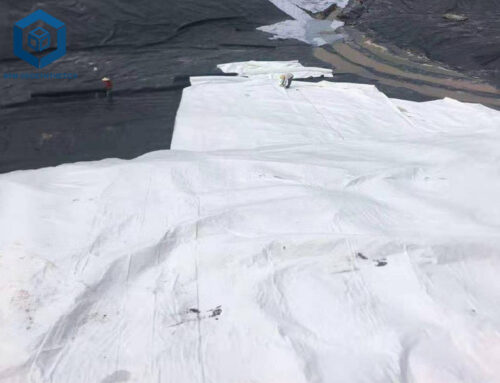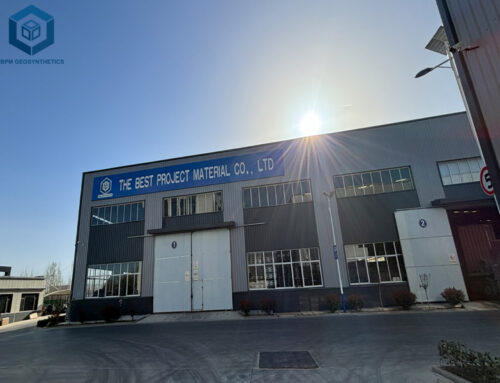Geotex fabric, a versatile geosynthetic material, has become an essential component in modern engineering and construction projects. Known for its durability, permeability, and reinforcement capabilities, geotex fabric plays a critical role in enhancing soil stability, erosion control, and drainage systems. As a leading innovator in this field, BPM Geotextile specializes in producing high-quality geotextile solutions that meet global engineering standards.Furthermore, advancements in geotextile technology foster innovation and facilitate international cooperation in large-scale infrastructure projects. This article explores the key functions of geotex fabric and how BPM Geotextile contributes to its growing applications across industries.
1. Introduction to Geotex Fabric
Geotex fabric is a permeable synthetic textile material used in geotechnical engineering and construction projects. It is typically made from polypropylene or polyester and comes in woven, non-woven, or knitted forms. Geotex fabric are designed to improve soil stability, provide erosion control, and aid in drainage, among other functions.
1.1 Geotex Fabric – Woven Geotextiles
- Made by weaving fibers together.
- High tensile strength, ideal for reinforcement and stabilization.
- Commonly used in road construction and embankments.
1.2 Geotex Fabric – Non-Woven Geotextiles
- Made by bonding fibers together (mechanically, thermally, or chemically).
- Excellent for filtration, drainage, and separation.
- Often used in drainage systems and erosion control.
1.3 Geotex Fabric – Knitted Geotextiles
- Combines flexibility with strength.
- Used in specialized applications requiring both durability and adaptability.
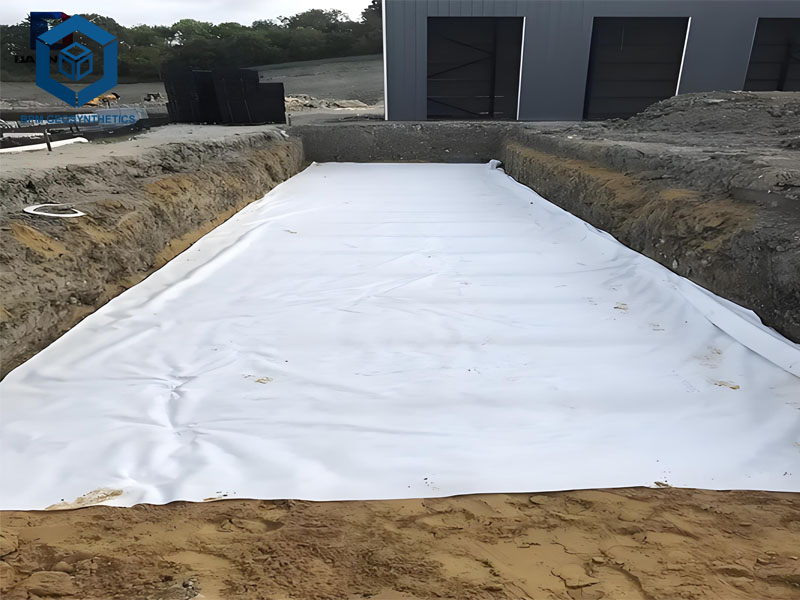

2. Key Functions of Geotex fabric
2.1 Geotex Fabric – Separation:
- Prevents mixing of different soil layers (e.g., in road construction).
- Maintains the integrity of materials and improves load distribution.
2.2 Geotex Fabric – Filtration:
- Allows water to pass while retaining soil particles.
- Used in drainage systems to prevent clogging.
2.3 Geotex Fabric – Reinforcement:
- Adds tensile strength to soil, improving stability.
- Commonly used in retaining walls, slopes, and embankments.
2.4 Geotex Fabric – Drainage:
- Facilitates the flow of water through or along the fabric.
- Reduces water pressure and prevents waterlogging.
2.5 Geotex Fabric – Erosion Control:
- Protects soil surfaces from erosion caused by water or wind.
- Used in riverbanks, coastal areas, and slopes.
2.6 Geotex Fabric – Protection:
- Acts as a cushion to protect geomembranes or other structures from damage.
- Often used in landfill liners and reservoirs.
3. Applications Of Geotex Fabric
3.1 Road Construction:
- Separates soil layers and reinforces road bases.
- Extends the lifespan of roads by preventing cracking and rutting.
3.2 Railway Construction:
- Stabilizes tracks and improves drainage.
- Reduces maintenance costs and enhances safety.
3.3 Landfills:
- Used as a protective layer for liners and drainage systems.
- Prevents contamination and improves waste management.
3.4 Erosion Control:
- Protects slopes, riverbanks, and coastal areas from erosion.
- Often used with vegetation for added stability.
3.5 Drainage Systems:
- Used in subsurface drainage, retaining walls, and sports fields.
- Ensures efficient water flow and prevents water accumulation.
3.6 Agriculture:
- Improves soil stability and drainage in agricultural fields.
- Used in greenhouse flooring and weed control.
3.7 Retaining Walls:
- Reinforces soil behind retaining walls.
- Prevents wall failure and improves structural integrity.
3.8 Coastal and Marine Engineering:
- Protects shorelines and structures from wave action and erosion.
- Used in breakwaters, seawalls, and revetments.
4. Advantages And Disadvantages Of Geotex Fabric
Geotextile fabric offers numerous advantages, including versatility, durability, and environmental benefits, making it a valuable material in modern engineering and construction. However, it also has some disadvantages, such as initial cost, susceptibility to damage, and environmental concerns related to synthetic materials. By understanding these pros and cons, engineers and project managers can make informed decisions about when and how to use geotextiles effectively. Proper selection, installation, and maintenance are key to maximizing the benefits while minimizing the drawbacks.
| Advantages | Disadvantages |
| 1. Versatility
Geotextiles can perform multiple functions, including separation, filtration, drainage, reinforcement, and erosion control. Suitable for a wide range of applications, from road construction to environmental protection. |
1.Initial Cost
High-quality geotextiles can be expensive, especially for large-scale projects. The initial investment may be higher compared to traditional materials. |
| 2.Durability
Resistant to UV rays, chemicals, and biological degradation. Long-lasting performance in harsh environmental conditions. |
2. Installation Challenges
Improper installation can reduce effectiveness, such as wrinkles or overlaps that compromise performance. Requires skilled labor and proper equipment for optimal results. |
| 3.Cost-Effectiveness
Reduces the need for traditional materials like gravel and sand, lowering material costs. Minimizes maintenance and repair expenses by enhancing the stability and lifespan of structures. |
3.Susceptibility to Damage
Can be punctured or torn during installation or by sharp objects in the soil. UV exposure during storage or installation can degrade some types of geotextiles if not properly protected. |
| 4.Ease of Installation
Lightweight and easy to transport, handle, and install. Can be quickly deployed using machinery or manual labor. |
4.Limited Lifespan in Certain Conditions
While durable, geotextiles may degrade over time in highly acidic or alkaline environments. Prolonged exposure to extreme weather conditions can reduce their effectiveness. |
| 5.Environmental Benefits
Prevents soil erosion and promotes vegetation growth. Can be used in eco-friendly projects like wetland restoration and slope stabilization. Reduces the environmental impact of construction by minimizing soil disturbance. |
5.Environmental Concerns
Most geotextiles are made from synthetic materials like polypropylene or polyester, which are not biodegradable. Disposal of used geotextiles can contribute to plastic waste if not recycled properly. |
| 6.Improved Performance
Enhances soil stability and load-bearing capacity in road and railway construction. Improves drainage and prevents waterlogging in agricultural and urban areas. |
6.Performance Limitations
Not all geotextiles are suitable for high-stress applications (e.g., heavy load-bearing structures). Some types may clog over time, reducing their filtration and drainage capabilities. |
| 7.Customizability
Available in different types (woven, non-woven, knitted) and strengths to suit specific project requirements. Can be tailored for specific applications, such as high-strength reinforcement or fine filtration. |
7.Maintenance Requirements
In some applications, geotextiles may require periodic inspection and maintenance to ensure continued performance. Clogging or damage may necessitate replacement, adding to long-term costs. |
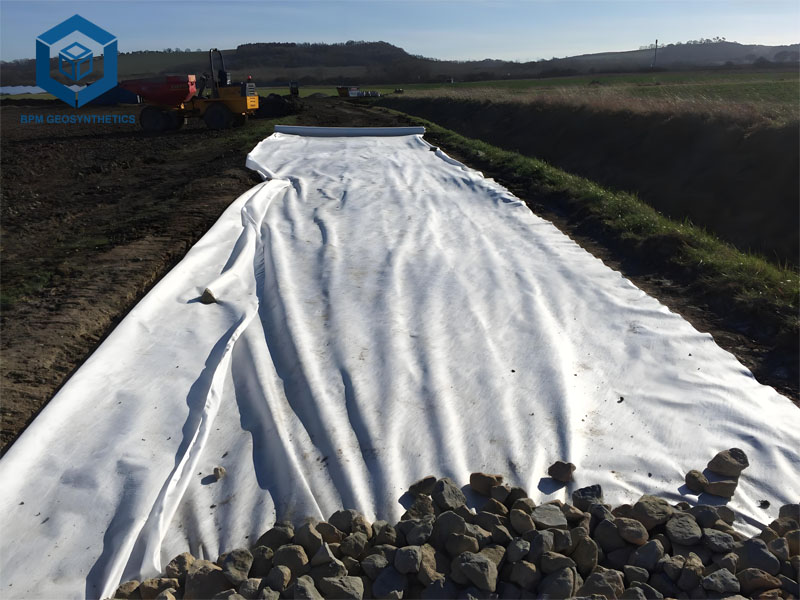
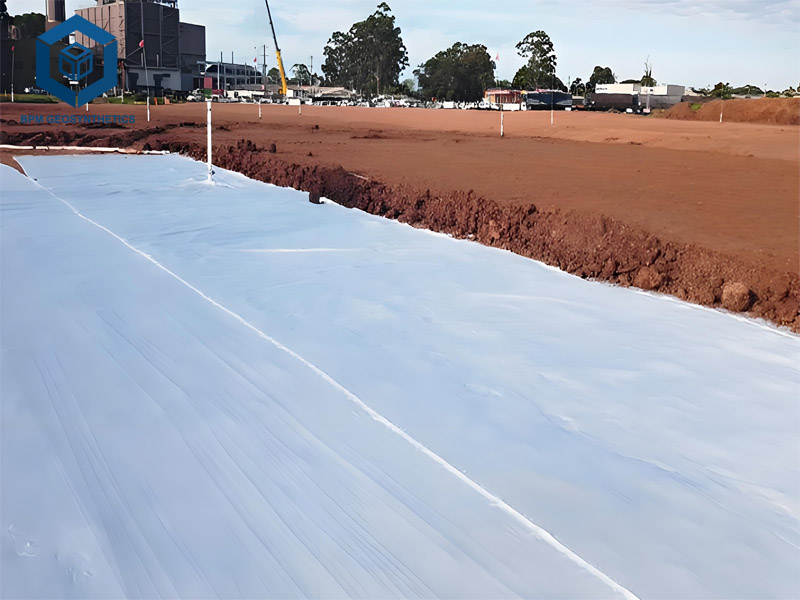
5. Conclusion
Geotex fabric, or geotextile, emerges as a transformative innovation in modern engineering, bridging the gap between infrastructure development and environmental sustainability. By integrating functions such as separation, filtration, drainage, and reinforcement, these versatile materials have revolutionized applications across construction, agriculture, and conservation. From stabilizing roadways and preventing erosion to safeguarding landfills and restoring ecosystems, geotextiles enhance project efficiency, durability, and resilience. Their cost-effectiveness and adaptability make them indispensable tools for addressing complex geotechnical challenges, while their eco-friendly properties align with global sustainability goals. As societies grapple with climate change, urbanization, and resource management, geotextiles will undoubtedly remain at the forefront of engineering solutions—paving the way for smarter, greener, and more resilient infrastructure for generations to come.

